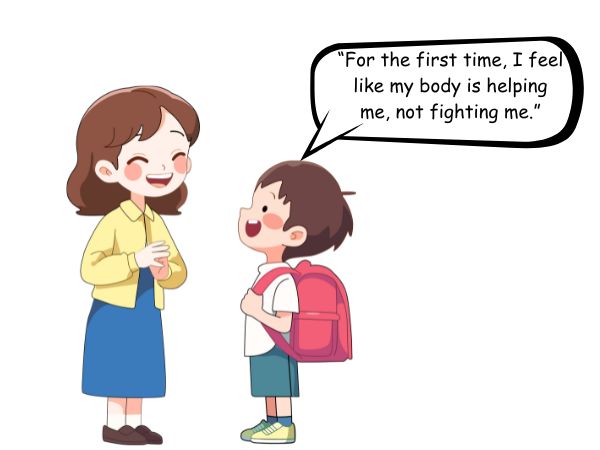🌱 The Story That Opens Our Eyes
When most of us think of senses, we stop at five: sight, sound, touch, taste, and smell. But neuroscience tells us we actually have eight senses. Beyond balance and movement (vestibular and proprioception), there’s one sense that’s often invisible but life-changing: interoception — the ability to notice signals from inside the body, like hunger, thirst, a racing heartbeat, or butterflies in the stomach.
For children, this “hidden sense” is the difference between focus and frustration.
Take the story of Arjun, a bright 10-year-old. Teachers often thought he was inattentive and restless. He fidgeted, left tasks incomplete, and sometimes burst into tears without clear reason. But what nobody saw was that Arjun’s interoception was underdeveloped. He couldn’t recognize when he was thirsty, tired, or anxious. To him, his body’s signals just felt like confusion.
One day, his teacher, Ms. Kavya, attended a Pipaltree session on teaching through the neural lens. She learned that Arjun wasn’t misbehaving — he was struggling to interpret his body’s signals.
So she made small but powerful changes in her classroom:
✅ Pausing after playtime to let students notice their heartbeat.
✅ Encouraging “body check-ins” with simple questions: “Am I calm? Am I hungry? Do I feel tense?”
✅ Allowing short water breaks or quiet breathing before tough lessons.
For Arjun, these little shifts were life-changing. Slowly, he began to recognize when he was anxious and used calming strategies. He started eating when hungry, drinking water when needed, and his focus in class improved dramatically.
One day, he told Ms. Kavya:
“For the first time, I feel like my body is helping me, not fighting me.”

🧠 The 8 Senses: More Than Meets the Eye
Most of us know the famous five senses. But neuroscience expands this to eight:
Sight (Visual)
Hearing (Auditory)
Touch (Tactile)
Taste (Gustatory)
Smell (Olfactory)
Balance (Vestibular) – sense of movement and balance.
Body Awareness (Proprioception) – knowing where our body is in space.
Internal Awareness (Interoception) – noticing inner signals like heartbeat, hunger, thirst, or emotions.
While all are essential, interoception is often overlooked — yet it plays a huge role in attention, self-regulation, and emotional well-being.
💡 Why Interoception Matters in the Classroom
Children who can’t recognize internal signals may look restless, distracted, or moody.
A child who’s anxious may not know why their stomach feels tight.
A child who’s hungry may look inattentive rather than underfed.
Without awareness of interoception, children often struggle to regulate emotions and learning.
When teachers understand this, they stop labeling kids as “lazy” or “problematic” and start supporting them with compassion and strategy.
🎯 Practical Ways Teachers Can Build Interoception Awareness
Here are some classroom-friendly practices inspired by Pipaltree’s neural lens programs:
Body Check-ins
Start class with a one-minute pause: ask students to close their eyes and notice their heartbeat, breathing, or stomach.Movement + Reflection
After a run in the playground, guide students to place a hand on their chest and feel the difference before and after.Emotion Mapping
Encourage students to describe where in their body they feel emotions: “When I’m nervous, my hands feel sweaty.”Hydration & Breaks
Normalize quick water breaks or short moments of stillness before hard lessons.Mindful Breathing
Simple breathing exercises help students notice how their body calms when they focus on their breath.
🌟 The Bigger Picture
What’s common between children like Arjun and countless others is this: once they become aware of interoception, they can regulate themselves better — leading to calmer classrooms, sharper focus, and greater confidence.
And what’s common between teachers like Ms. Kavya is this: with a little knowledge from Pipaltree’s short courses, they can turn frustration into transformation.
Because when we look at learning not just through books, but through the neural lens, we don’t just teach better. We help children truly thrive.
Want to transform your school too? Bring the power of new-age teaching & learning.
Contact us to revolutionize your school’s teaching approach today!
In service since: 2010.
